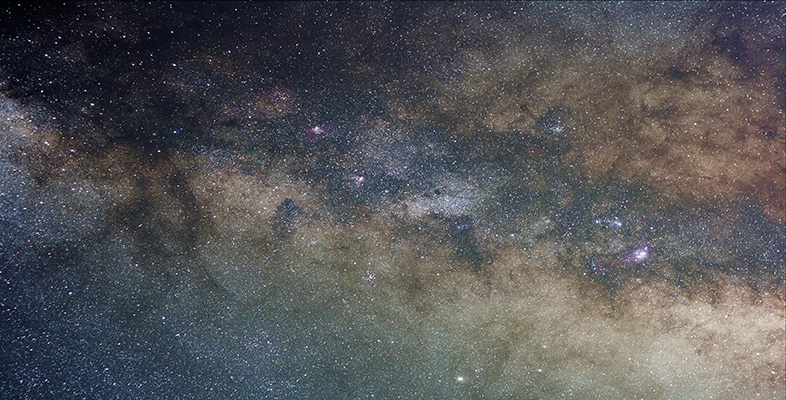Radio-quiet AGNs
There has been a great deal of debate about whether there really are two different types of Seyfert or whether they can both be accounted for by the same model.
For example, suppose that you look at the model AGN in Figure 36a from a direction not too far from the rotation axis of the torus. You will see X-ray, UV (the 'big blue bump') and other radiation from the engine, broad lines from the broad-line region, narrow lines from the narrow-line region and infrared from the dust torus. You will observe the features associated with a type 1 Seyfert.
If you look at the same model from a direction nearer to the plane of the torus, the X-rays and the broad optical emission lines will be hidden by the torus, and you will observe the features associated with a type 2 Seyfert. Observations strongly suggest that at least some type 2 Seyferts are essentially type 1 Seyferts seen from a different angle. This also accounts for the intermediate types, where the broad-line region is only partly in view.
The galaxy in Figure 35 is described as a type 2 Seyfert. Is this significant?
Yes. In the unified model, type 2 Seyferts are seen from an angle close to the plane of the torus. This is the best viewing angle to see the shape of the NLR, as discussed in Question 13.
Does the same apply to other types of AGN? Radio-quiet quasars (QSOs) appear in many respects to be similar to type 1 Seyferts, showing both broad and narrow emission lines, but are much more luminous. There seems little doubt that Seyferts and radio-quiet quasars differ primarily in luminosity.
Much less is known about 'type 2' quasars without broad lines, analogous to the type 2 Seyferts. It may be that the dust torus around the more luminous quasars is diminished by the intense radiation, hence revealing the BLR from a large fraction of all possible orientations. On the other hand, some astronomers speculate that a recently discovered class of highly luminous galaxies that emit strongly in the far infrared may be the missing type 2 quasars concealed behind their dust clouds.
